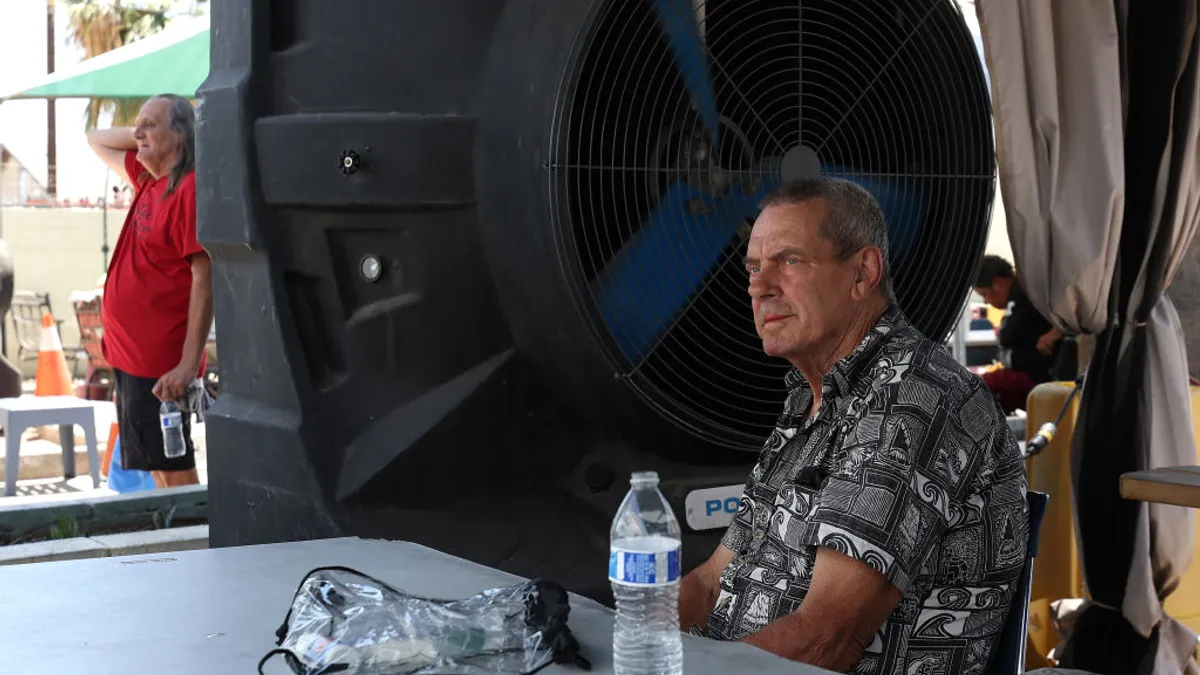Dive Brief:
- The U.S. Department of Housing and Urban Development released an extreme heat “playbook” on Sept. 23 to help grantees and community partners mitigate the impacts of extreme heat in their areas and lower cooling costs for public housing residents.
- The 77-page document says, unlike other heat guides, “it is not specific to one city or region; rather it is designed to present strategies that can be paired with local knowledge to be implemented in communities across the country.”
- The playbook “will move us closer towards safer housing, particularly for seniors,” HUD acting Secretary Adrianne Todman said in a statement. Older adults are among the groups most vulnerable to extreme heat-related health risks.
Dive Insight:
The federal government announced its first-ever national heat strategy last month. Record-breaking high temperatures have coincided with increasing heat-related illnesses and deaths in recent years. HUD’s new playbook is part of advancing that national heat strategy.
Even though extreme heat is the most deadly type of extreme weather in the U.S., its impact is often “overshadowed by visible discrete disasters like hurricanes and floods,” the playbook says. “This gap hinders effective community response and preparedness during extreme heat events,” it says. “Thus, there is a pressing need to formally recognize extreme heat at all levels of government and to unlock the necessary resources to urgently address the escalating crisis of heat.”
This sentiment aligns with those expressed by some advocates and local officials, who have called for the Federal Emergency Management Agency to include extreme heat in its definition of a “major disaster” eligible for federal funding.
HUD says it aimed to make the playbook actionable for communities by including information about potential funding sources and highlighting how federal dollars are being used nationwide to build heat resilience. For example, the book describes a Scottsdale, Arizona, program that helps homeowners reduce their energy consumption with cost-effective improvements. It also points to Youngstown, Ohio, for its use of HUD’s Section 108 Loan Guarantee Program to redevelop a 20-acre riverfront site into a public park and amphitheater with water features, green infrastructure and community event spaces.
The playbook encourages HUD grant recipients to plan and fund extreme heat resilience work in their assessments of state and local affordable housing and community development needs.












